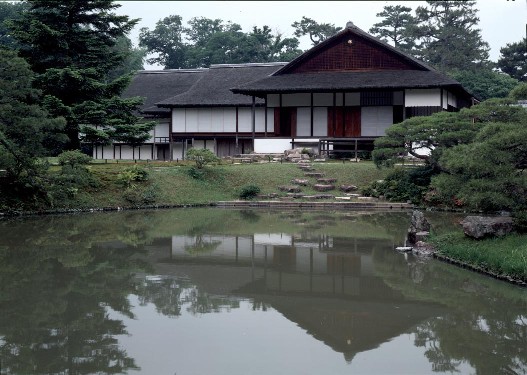| architecture |
| calligraphy |
| ceramics |
| clothing |
| comics |
| gardens |
| lacquerwork |
| literature |
| movies |
| music |
| painting |
| poetry |
| sculpture |
| tea ceremony |
| television |
| theatre |
| weaponry |
| thematic routes |
| timeline |
| the site |
context: architecture > medieval > palaces & villas
Katsura Imperial Villa

|
If there is one building to characterise the classic style of Japanese architecture, and to stand as the country's greatest masterpiece, it would be this villa. Michael Dunn says that it inspired the Bauhaus and Mackintosh and Mondrian and Frank Lloyd Wright, after Bruno Taut brought it to the attention of the West. It's easy to see why the Modernists liked it - the clarity and apparent simplicity of its minimal design is as perfect as you'll find anywhere, and some of its panelling looks pretty much like a monochrome Mondrian.
It was built in the first half of the 17th Century, supervised by teamaster Enshu, who had been part of Hon'ami Koetsu's arts colony. It's all raised on stilts because of the damp area, which is prone to flooding. There are five breathtakingly harmonious buildings for the tea ceremony and writing poetry and the like, around a lake. Its gardens are as fascinating as the buildings.
The Shoin building inspired a style among, in particular, aesthetes and intellectuals, for simple but asymmetrical rectilinear buildings with alcoves for writing, display of objets d'art and storing documents.
sideways: Katsura gardens
backwards: Kinkakuji
